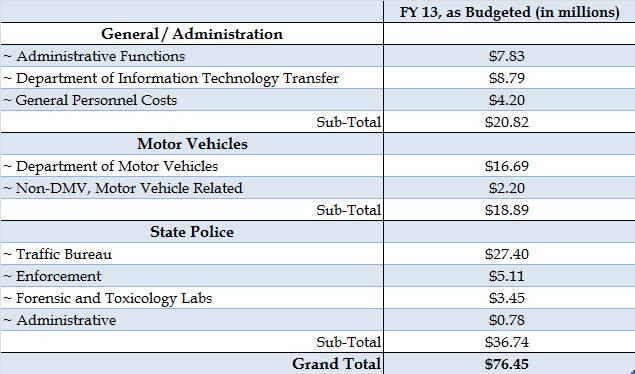Charlie Arlinghaus
March 20, 2013
As originally published in the New Hampshire Union Leader
The state budget is a mess. So what’s new? House budget writers are working to make sense of that mess before Friday. Their budget will be different from the governor’s but likely leave a lot of work left to be done.
In New Hampshire, governors present a budget more or less fully formed to the legislature. Then the House of Representatives takes six weeks to develop their own draft, plug any holes in assumptions, and then pass that draft to the state senate for further work.
This year, the House had a little less time in some areas. The governor included quite a few policy choices in the narrative part of the budget. But while the spreadsheet part of the budget, the numbers, was released right on time, The narrative was not released until three weeks later on March 5 (oddly, the state website lists it as being introduced a week before that even though it wasn’t available to anyone).
That time lag left the House just three weeks to whip together its own draft of the budget which needs to be ready by Friday.
From the beginning, the House was in a difficult spot. The governor’s revenue estimates used to be balance her budget were a little beyond what Ways & Means (the tax committee) had been using for its own estimates. In addition, a few of the revenue sources were going to require some work even to get them through the House (which, unlike the Senate, has a majority from the governor’s own party).
Although the governor hopes for $80m for the general state operating budget from a casino, that bill started in the senate. It won’t be considered by the House before they have to pass a budget and the version that passed the Senate doesn’t allow any of the proceeds to be spent in the general fund. So the House wisely proceeded without it.
All in all, they will end up available revenues about $135 million below the governor’s level. That necessitates not spending in some areas or making very optimistic assumptions about spending.
Keep in mind, there are two different kinds of spending authority in the New Hampshire budget. One is a limit: for example, you may not, in this department, spend more than $1.4m on salaries. The second kind of spending is an estimate of an aid program. For example, people receive Medicaid so long as they qualify. We estimate the approximate caseload for budgeting. But if we have more people eligible than we estimated, that money is still spent. It becomes important to estimate accurately.
Current reports on assumption-making are troublesome. Budget writers projected early in the week that expanding Medicaid will save $500,000. By mid-week they found it will cost a few million. Instead they have decided to save money not with a change by projecting their will be fewer caseloads in Medicaid and other entitlement type programs. That hopeful assumption would “save” $12 million.
Sometimes, new information makes good things possible. But remember that we ran into trouble a half dozen years ago because budget writers in need of money produced optimistic and very unrealistic caseload estimates. Sometimes hope makes your job easier than realism and needs to be guarded against.
Also worrisome is a warning from veteran reporter Kevin Landrigan that some savings might be achieved through exaggerated lapse estimates. Every year, as part of the balancing process, we estimate how much money will remain unspent in each account – lapse in budget terms. Usually, it’s a couple percent but if you estimate that number very high, you can finance a few tens of millions of dollars and only be forced to pay the piper more than a year down the road when you can easily blame some economic scenario or another.
Sometimes new information changes numbers. The state’s Treasurer has aggressively refinanced the state’s general fund debt over the last six years getting New Hampshire rates that are not just low but even lower than our bond rating would suggest possible. Information based on the November offering which didn’t make it into the governor’s budget has allowed the House budget to assume we will spend about $8 million less on debt payments than the governor assumed.
Not that I’m opposed to keeping an eye on debt. I’ve been concerned for a few years about the massive run up of debt from 2007 through 2011 – an increase equal to that of the prior twenty years. While debt leveled off the last two years – increasing just 2% after a 22% increase the prior two years – we need to borrow less each year than we pay off to reduce debt service payments. While interest rates are at an all-time low, they won’t remain that way forever.
The House budget is only a first step. But even at this point, we need to be cautious, make realistic estimates, and not let hope keep us from making difficult but necessary decisions.


